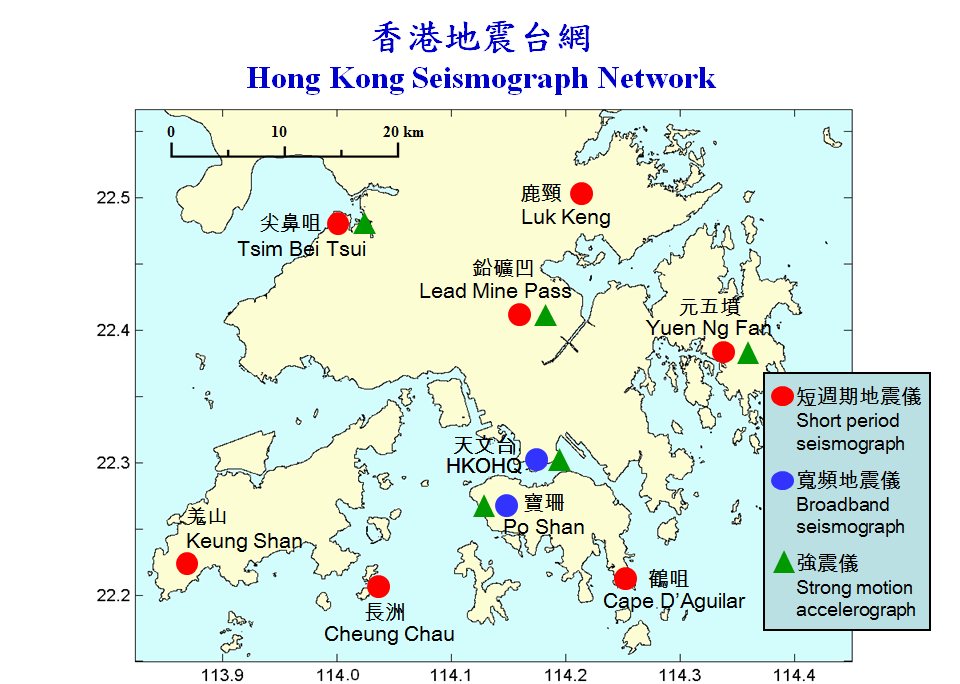EARTHQUAKE MONITORING
The Hong Kong Observatory (HKO) has monitored distant earthquakes since 1921 using long-period seismographs. In 1979, a short-period seismograph network was established for monitoring local tremors. Development and optimization of the seismograph network continues with the advancement in science and technology. Nowadays, HKO has installed broadband seismographs at Po Shan Road, Mid-levels and the HKO's Headquarters, Tsim Sha Tsui to monitor earthquakes worldwide, especially those earthquakes in the South China Sea that will probably generate tsunami. Since 2010, the Po Shan Seismograph Station has been an affiliated broadband station of the Global Seismographic Network. Its recorded seismic waves are provided to various centres around the world via the Incorporated Research Institutions for Seismology (IRIS) in the United States. The Observatory also exchanges real-time data with several hundreds seismic stations around the world through IRIS.
HKO also operates seven short period seismograph stations at Cape D'Aguilar, Cheung Chau, Keung Shan, Lead Mine Pass, Luk Keng, Tsim Bei Tsui and Yuen Ng Fan respectively. This coupled with the seismograph stations at Po Shan and the HKO's Headquarters form a local earthquake monitoring network for determining effectively the epicentre of locally felt earthquakes in Hong Kong's nearby regions. Accelerographs are also installed at some seismograph stations for recording peak ground acceleration during felt earthquake which help to determine the earthquake intensity in Hong Kong.

HKO's earthquake data processing system collects real time seismic waveform data from global and Hong Kong seismograph networks to compute earthquake parameters such as origin time, epicentre and magnitude. HKO also collects earthquake and tsunami information issued by the South China Sea Tsunami Advisory Center, China Earthquake Administration, Earthquake Administration of Guangdong Province, Pacific Tsunami Warning Center (PTWC), Northwest Pacific Tsunami Advisory Center (NWPTAC), West Coast and Alaska Tsunami Warning Center (WCATWC) and U.S. Geological Survey.
For locally felt earthquake and larger earthquake worldwide, HKO will issue quick earthquake messages via social websites and RSS to the public, and also SMS and emails to news agencies, media, related government policy bureaux and departments as well as earthquake and tsunami monitoring centres overseas. In addition, HKO will issue strong earthquake reports and locally felt earthquake reports to the media via the Information Services Department (ISD).